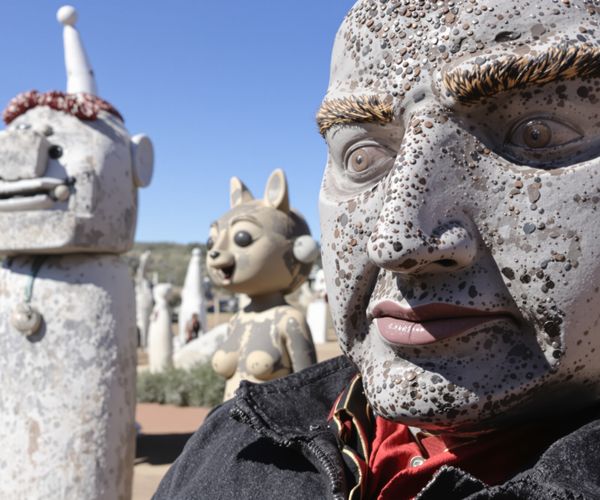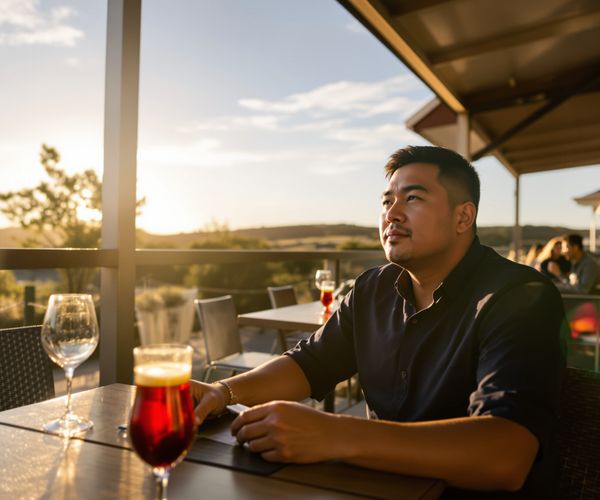
Kangaroo Island: Australia’s Untamed Natural Haven
Discover Kangaroo Island, Australia's natural gem, where pristine landscapes and diverse wildlife create a haven for outdoor enthusiasts and nature lovers.
Kangaroo Island, located off the coast of South Australia, is a sanctuary of unspoiled landscapes and abundant wildlife. This pristine island is renowned for its breathtaking scenery, from rugged coastlines and crystal-clear waters to lush forests and rolling sand dunes. As a tourist, you will find Kangaroo Island to be a paradise for outdoor enthusiasts and nature lovers alike. Adventure awaits at Flinders Chase National Park, where you can marvel at the Remarkable Rocks and Admirals Arch, both iconic geological formations. The park is also home to a diverse range of wildlife, including koalas, kangaroos, and an array of bird species. Seal Bay Conservation Park offers a unique opportunity to walk among Australian sea lions in their natural habitat, providing an unforgettable close-up encounter. For those interested in the island's rich cultural heritage, Kangaroo Island's charming towns and villages offer a glimpse into local life. You can indulge in the island's gourmet food and wine scene, with fresh seafood, artisanal produce, and boutique wineries. Don't miss a visit to the Kangaroo Island Wildlife Park, where you can get hands-on with native animals and learn about conservation efforts. Whether you are exploring the island’s rugged wilderness, relaxing on its serene beaches, or enjoying local delicacies, Kangaroo Island promises a unique and enriching travel experience. Its untouched beauty and abundant wildlife make it a must-visit destination for anyone seeking to connect with nature and escape the hustle and bustle of everyday life.
Local tips in Kangaroo Island
- Rent a car to explore the island at your own pace, as public transport options are limited.
- Book tours and accommodation in advance, especially during peak season, to ensure availability.
- Pack appropriate clothing and gear for outdoor activities, including sturdy shoes and sun protection.
- Visit local markets and shops for unique souvenirs and to support the island's artisans.
- Be mindful of wildlife while driving, especially at dawn and dusk when animals are most active.
Kangaroo Island: Australia’s Untamed Natural Haven
Kangaroo Island, located off the coast of South Australia, is a sanctuary of unspoiled landscapes and abundant wildlife. This pristine island is renowned for its breathtaking scenery, from rugged coastlines and crystal-clear waters to lush forests and rolling sand dunes. As a tourist, you will find Kangaroo Island to be a paradise for outdoor enthusiasts and nature lovers alike. Adventure awaits at Flinders Chase National Park, where you can marvel at the Remarkable Rocks and Admirals Arch, both iconic geological formations. The park is also home to a diverse range of wildlife, including koalas, kangaroos, and an array of bird species. Seal Bay Conservation Park offers a unique opportunity to walk among Australian sea lions in their natural habitat, providing an unforgettable close-up encounter. For those interested in the island's rich cultural heritage, Kangaroo Island's charming towns and villages offer a glimpse into local life. You can indulge in the island's gourmet food and wine scene, with fresh seafood, artisanal produce, and boutique wineries. Don't miss a visit to the Kangaroo Island Wildlife Park, where you can get hands-on with native animals and learn about conservation efforts. Whether you are exploring the island’s rugged wilderness, relaxing on its serene beaches, or enjoying local delicacies, Kangaroo Island promises a unique and enriching travel experience. Its untouched beauty and abundant wildlife make it a must-visit destination for anyone seeking to connect with nature and escape the hustle and bustle of everyday life.
When is the best time to go to Kangaroo Island?
Iconic landmarks you can’t miss
Seal Bay Conservation Park
Explore the stunning Seal Bay Conservation Park in South Australia, home to a unique sea lion colony and breathtaking coastal scenery.
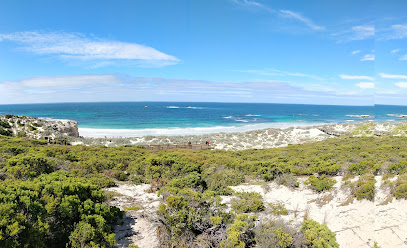
Kangaroo Island Wildlife Park
Explore Kangaroo Island Wildlife Park and immerse yourself in the beauty of Australia's unique wildlife and natural landscapes.
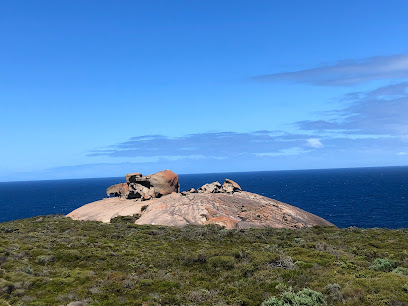
Kangaroo Island Outdoor Action
Discover the wild beauty of Kangaroo Island with thrilling outdoor adventures and unforgettable experiences at Kangaroo Island Outdoor Action.
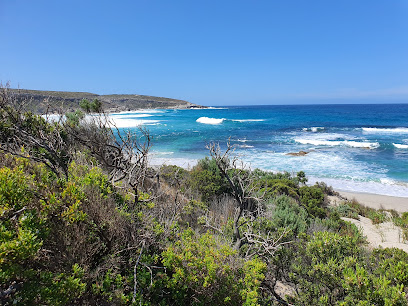
Flinders Chase National Park
Discover the breathtaking landscapes and diverse wildlife of Flinders Chase National Park on Kangaroo Island, a true gem of Australia.
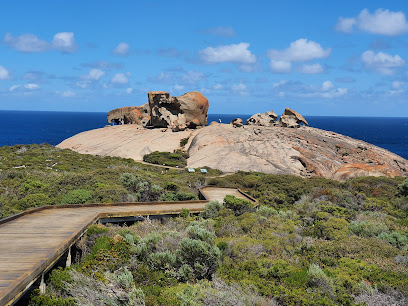
Emu Ridge Eucalyptus Oil Distillery
Explore the aromatic world of eucalyptus at Emu Ridge Eucalyptus Oil Distillery, a family-run gem in South Australia offering unique natural goods and art.
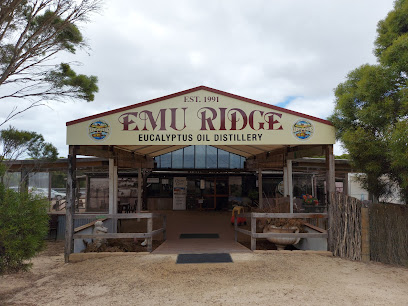
Admirals Arch
Explore the stunning Admirals Arch in Flinders Chase National Park, a natural wonder with breathtaking views and abundant wildlife on Kangaroo Island.
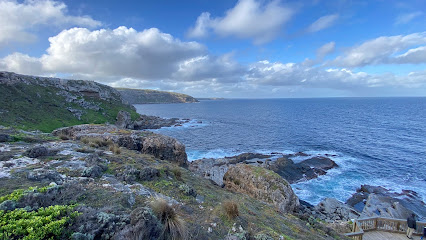
Raptor Domain
Discover the enchanting world of birds of prey at Raptor Domain, a premier wildlife sanctuary on Kangaroo Island, passionate about conservation and education.
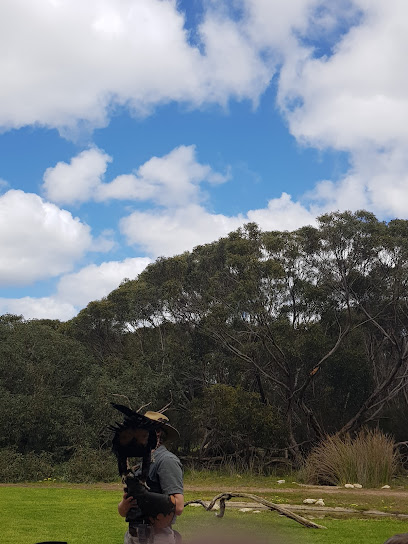
Remarkable Rocks
Discover the breathtaking beauty of Remarkable Rocks in Flinders Chase National Park, a must-see nature wonder on Kangaroo Island, South Australia.
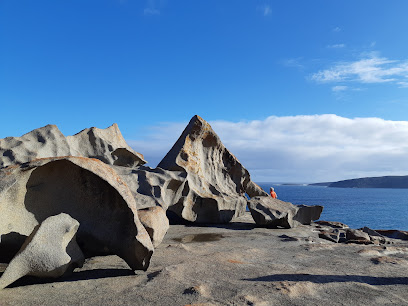
Island Beehive
Experience the sweet side of Kangaroo Island at Island Beehive, where honey production meets nature's wonders in a delightful and educational setting.
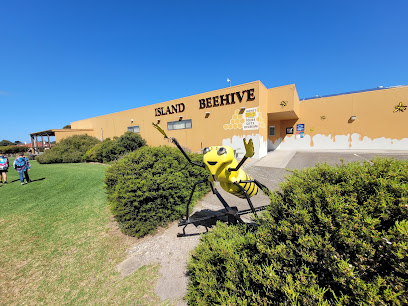
Little Sahara Adventure Centre
Experience the thrill of sandboarding and quad biking at the Little Sahara Adventure Centre in South Australia, where adventure meets stunning natural beauty.
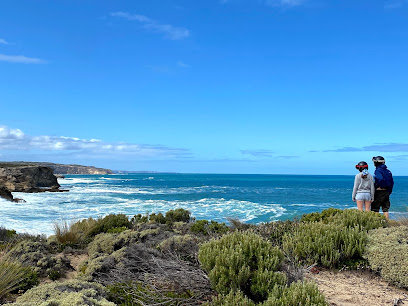
Emu Bay Lavender Farm
Experience the beauty, serenity, and local flavors at Emu Bay Lavender Farm, a hidden gem in South Australia offering stunning lavender fields and delightful refreshments.
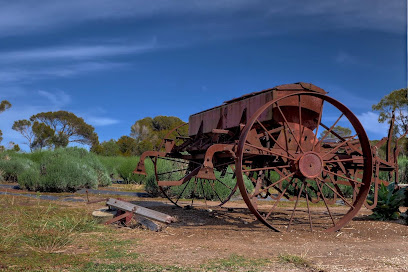
Hanson Bay Wildlife Sanctuary
Explore Hanson Bay Wildlife Sanctuary, a haven for diverse Australian wildlife, where you can see koalas, kangaroos, and unique bird species in their natural habitat.
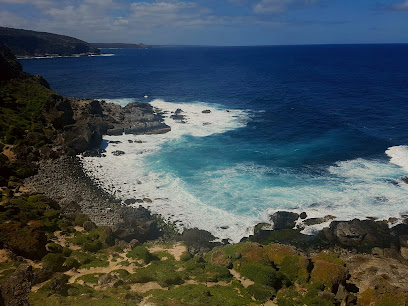
Kangaroo Island Seaside Inn
Experience the tranquil beauty of Kangaroo Island at the Kangaroo Island Seaside Inn, your ideal coastal retreat with stunning views and delicious dining.

Kangaroo Island Tours & Nocturnal Tours - Kangaroo Island Hire a Guide
Discover Kangaroo Island's breathtaking landscapes and vibrant wildlife with expert-guided tours, perfect for every nature enthusiast.
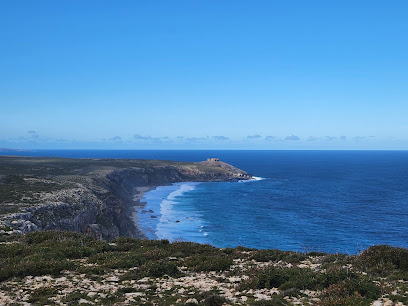
The Islander Estate Vineyards - Kangaroo Island Wines
Discover the exquisite wines of Kangaroo Island at The Islander Estate Vineyards, where exceptional views and flavors await every visitor.
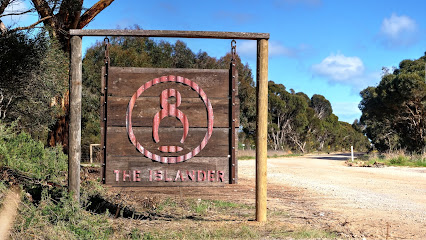
Unmissable attractions to see
Seal Bay Conservation Park
Discover the enchanting Seal Bay Conservation Park, home to a thriving colony of Australian sea lions and breathtaking coastal landscapes.

Kangaroo Island Wildlife Park
Discover the unique wildlife of Kangaroo Island at the Kangaroo Island Wildlife Park, where conservation meets family-friendly fun.

Flinders Chase National Park
Discover the enchanting landscapes and diverse wildlife of Flinders Chase National Park on Kangaroo Island, a true Australian treasure.
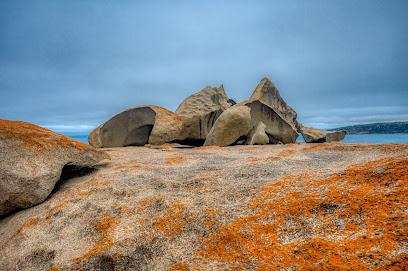
Emu Ridge Eucalyptus Oil Distillery
Explore the natural beauty and wellness of Emu Ridge Eucalyptus Oil Distillery in South Australia, a unique tourist attraction blending nature and local culture.
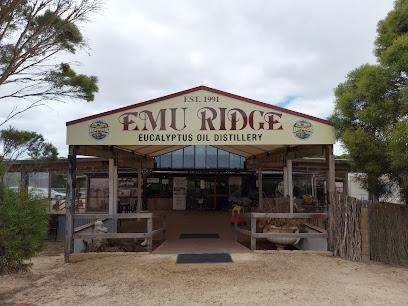
Clifford's Honey Farm
Explore Clifford's Honey Farm in Haines, South Australia, where the art of honey production meets stunning natural beauty and delicious tastings.

Raptor Domain
Discover the breathtaking world of birds of prey at Raptor Domain, a premier wildlife sanctuary on Kangaroo Island dedicated to conservation and education.
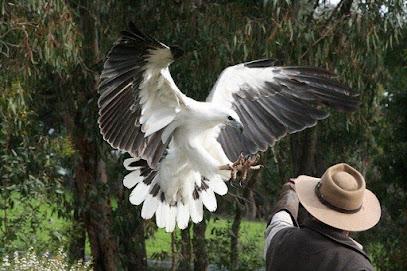
Remarkable Rocks
Explore the breathtaking natural art of Remarkable Rocks in Flinders Chase National Park, a must-visit destination on Kangaroo Island for nature lovers and photographers.
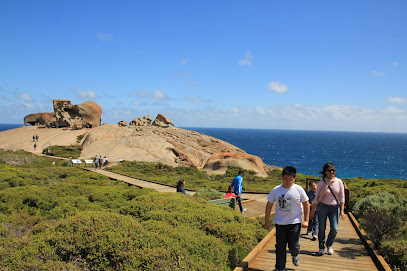
Little Sahara Adventure Centre
Explore the breathtaking sand dunes, thrilling activities, and natural beauty at Little Sahara Adventure Centre on Kangaroo Island.
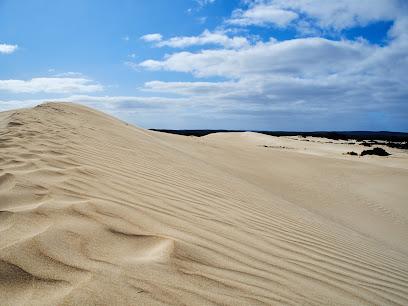
Emu Bay Lavender Farm
Discover tranquility at Emu Bay Lavender Farm in South Australia, where vibrant lavender fields meet delightful culinary experiences and breathtaking natural beauty.
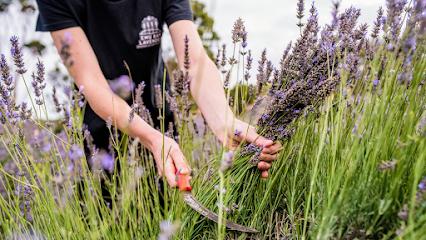
False Cape Wines
Experience the beauty and flavors of South Australia at False Cape Wines, where delightful wines and scenic landscapes await every visitor.
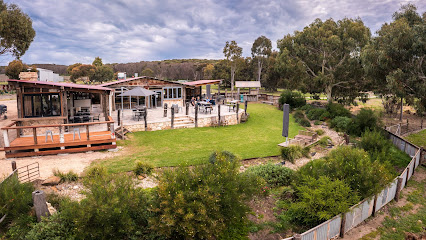
Hanson Bay Wildlife Sanctuary
Discover the enchanting wildlife and natural beauty at Hanson Bay Wildlife Sanctuary on Kangaroo Island, South Australia.
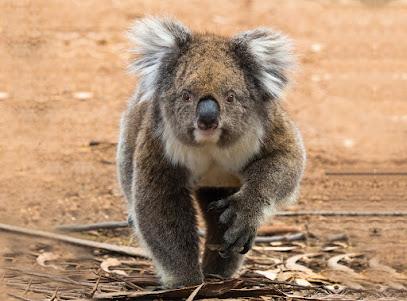
Dudley Wines
Experience breathtaking views and exquisite wines at Dudley Wines, a must-visit winery on Kangaroo Island, Australia.
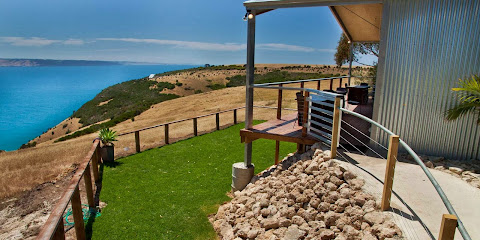
Kangaroo Island Brewery
Experience the authentic flavors of Kangaroo Island at the Kangaroo Island Brewery, where local ingredients meet exceptional brewing.
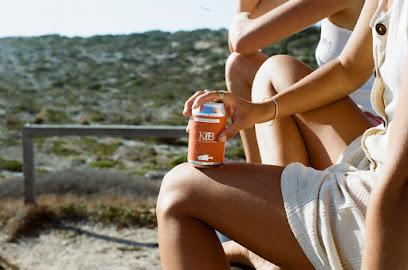
The Islander Estate Vineyards - Kangaroo Island Wines
Experience the best of Kangaroo Island wines at The Islander Estate Vineyards, where every sip is a journey through nature and tradition.
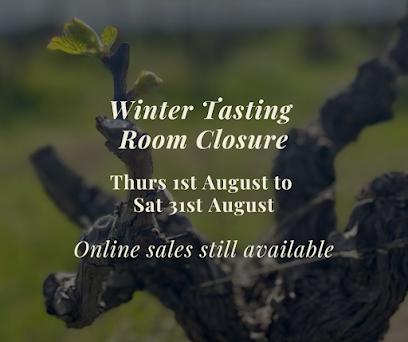
Vivonne Bay Beach
Experience the breathtaking beauty of Vivonne Bay Beach in South Australia, a serene escape for nature lovers and beach enthusiasts alike.
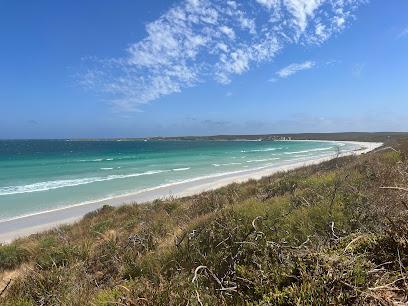
Essential places to dine
Aurora Ozone Hotel - Kangaroo Island
Discover unparalleled beauty and comfort at Aurora Ozone Hotel on Kangaroo Island - your gateway to adventure and relaxation.

Cactus Kangaroo Island
Experience delightful breakfasts and lunches at Cactus Kangaroo Island - a cozy café in Kingscote offering local flavors and great coffee.
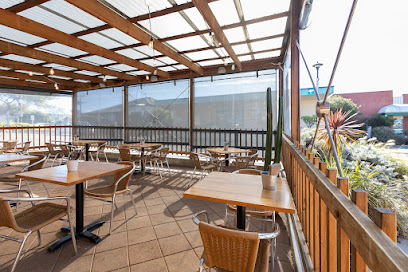
Kangaroo Island Fresh Seafoods
Discover delicious seafood at Kangaroo Island Fresh Seafoods in Kingscote - where every bite brings you closer to Australia's coastal flavors.
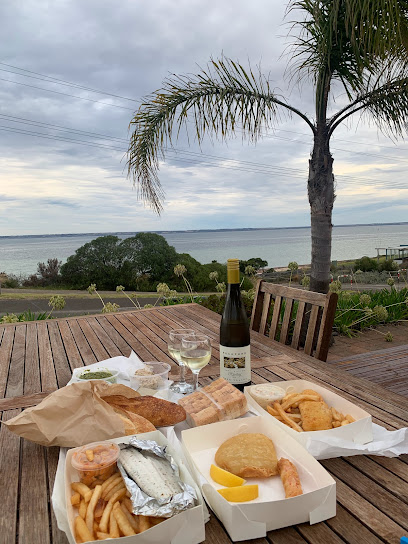
Penneshaw Pub
Experience authentic South Australian hospitality at Penneshaw Pub with local cuisine, stunning views, and vibrant atmosphere.
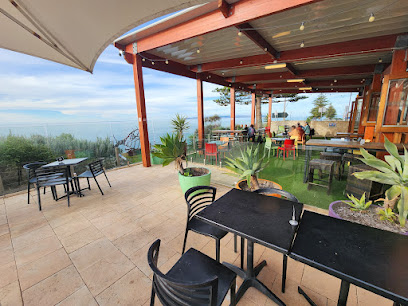
Millie Mae's Pantry
Experience delightful cuisine and local charm at Millie Mae's Pantry, your go-to spot in Penneshaw for food, coffee, and unique gifts.
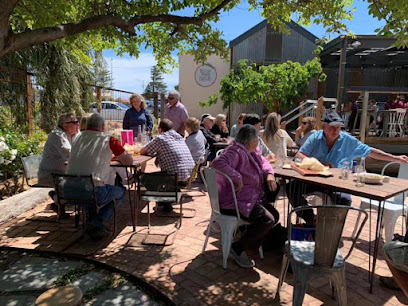
Bella Cafe & Pizza Bar
Savor delicious pizzas and aromatic coffee at Bella Cafe & Pizza Bar in Kingscote – the perfect spot for casual dining.
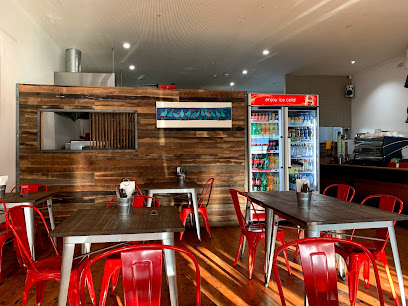
Amadio’s Vino e Cucina – Kangaroo Island
Discover exquisite local cuisine and fine wines at Amadio’s Vino e Cucina on Kangaroo Island – where every meal is a celebration of flavor.
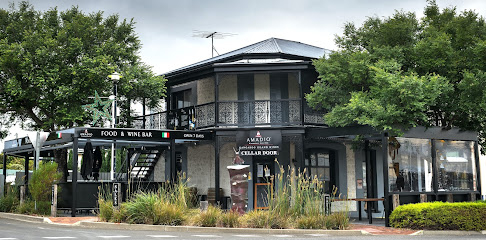
The Deck cafe on the wharf
Discover delightful flavors and stunning views at The Deck Cafe on the Wharf in American River.
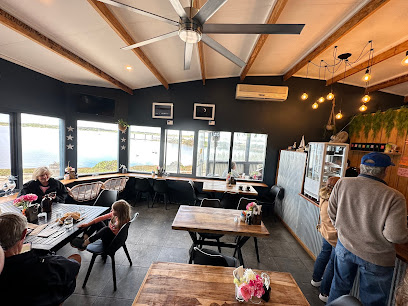
Kangaroo Island Seaside Inn
Experience coastal serenity at Kangaroo Island Seaside Inn, where comfort meets exquisite Indian dining amidst breathtaking ocean views.

Fire and Smoke Ki
Discover exquisite flavors at Fire and Smoke Ki in Penneshaw - A must-visit restaurant showcasing local South Australian cuisine.
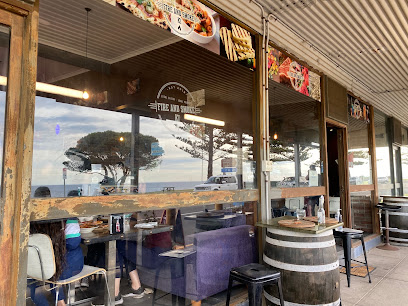
Rabbit Warren Bakery
Discover the authentic taste of Kangaroo Island at Rabbit Warren Bakery with fresh pastries and hearty breakfasts.
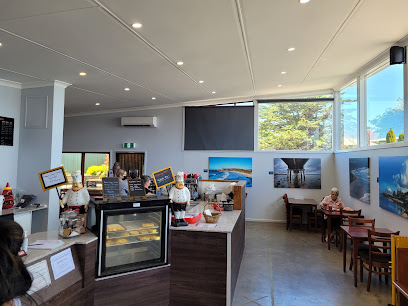
Amanda's Takeaway
Discover delicious takeaway delights at Amanda's Takeaway in Kingscote - where flavor meets convenience!

Sunset Food and Wine
Discover exquisite dining at Sunset Food and Wine in Kangaroo Head, where local ingredients meet culinary artistry amidst breathtaking views.
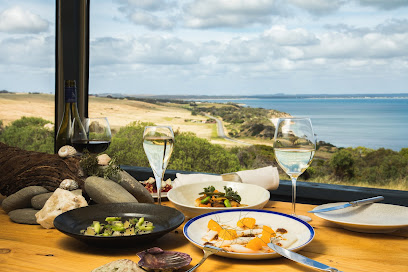
The Kiosk Penneshaw
Experience fresh local cuisine with stunning coastal views at The Kiosk Penneshaw on Kangaroo Island.
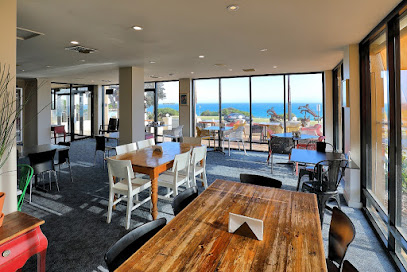
So Sando
Discover So Sando in Kingscote – where delightful cuisine meets warm hospitality in South Australia.
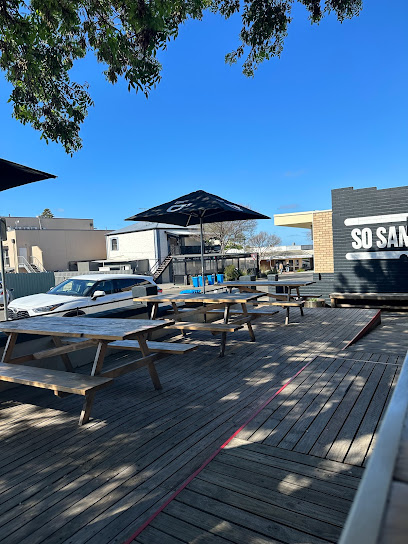
Markets, malls and hidden boutiques
Island Beehive
Explore Island Beehive: A Sweet Escape into the World of Honey on Kangaroo Island, South Australia.
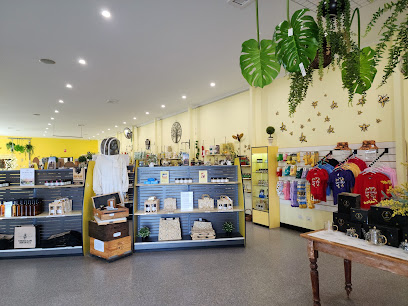
Vivonne Bay General Store
Discover the Vivonne Bay General Store - your go-to spot for local flavors, essentials, and a taste of South Australian hospitality.

Millie Mae's Pantry
Explore Millie Mae's Pantry in Penneshaw: a charming café and gift shop offering local flavors and unique souvenirs on Kangaroo Island.
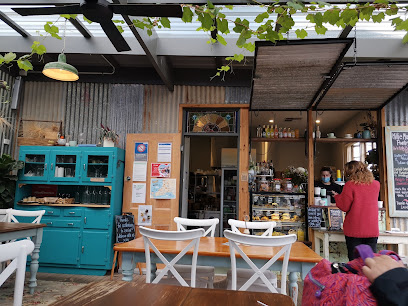
Drakes Kingscote
Discover Drakes Kingscote, your ultimate grocery destination in Kingscote, South Australia, offering fresh local produce and unique Australian products.
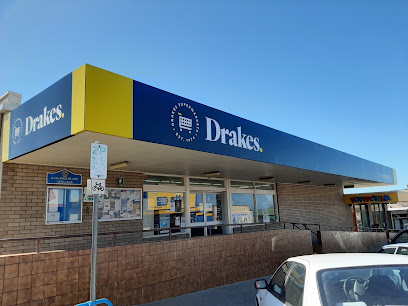
Penneshaw IGA
Discover the tastes of Kangaroo Island at Penneshaw IGA, a supermarket that showcases fresh produce and local delicacies for every traveler.
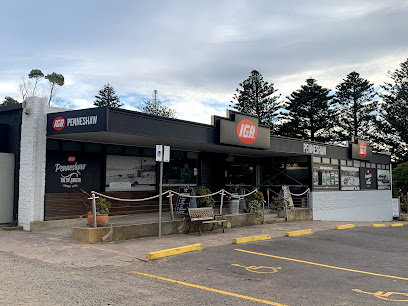
Bi-Rite Home Appliances Kangaroo Island
Explore Bi-Rite Home Appliances in Kingscote for high-quality appliances and exceptional service during your Kangaroo Island adventure.
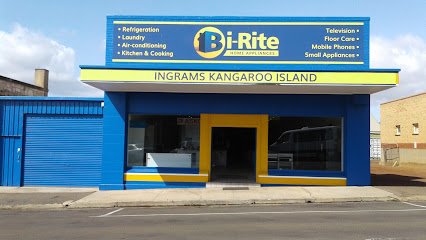
Kangaroo Island Wool
Experience sustainable fashion and local craftsmanship at Kangaroo Island Wool, a unique clothing supplier and tourist attraction in South Australia.
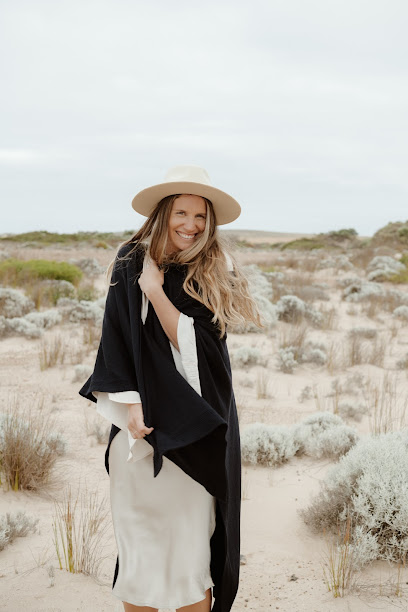
OTR Kingscote
Discover convenience and local flavor at OTR Kingscote, your go-to spot for delicious meals, fresh coffee, and travel essentials in Kingscote.
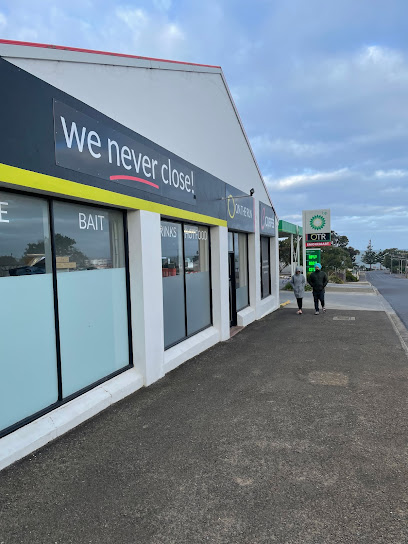
Kingscote Gift Shop
Explore the Kingscote Gift Shop for unique souvenirs and local crafts that embody the essence of South Australia.

Ingram's Home Timber & Hardware
Explore Kingscote's Ingram's Home Timber & Hardware for unique gifts, quality building supplies, and outdoor essentials, all in one charming location.
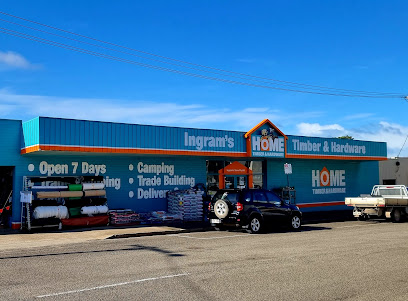
Fine Art Kangaroo Island
Explore the artistic essence of Kangaroo Island at Fine Art Kangaroo Island, where local creativity and craftsmanship come to life.
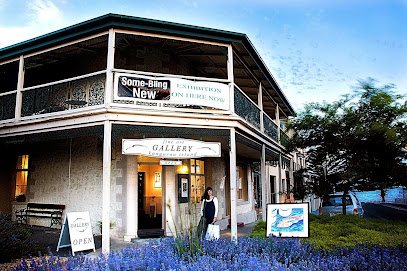
OP Shop
Explore OP Shop in Kingscote for unique clothing finds and sustainable fashion, reflecting local creativity and community spirit.
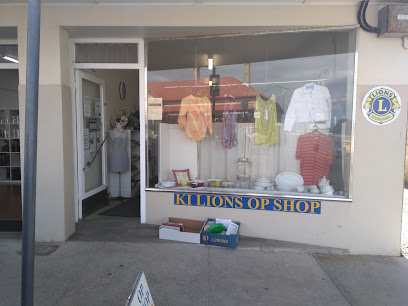
beach barista
Discover the perfect coastal retreat at Beach Barista, where exceptional coffee meets breathtaking ocean views.

TerryWhite Chemmart Kangaroo Island
Explore Kangaroo Island with confidence, knowing TerryWhite Chemmart is here for your health and wellness needs.
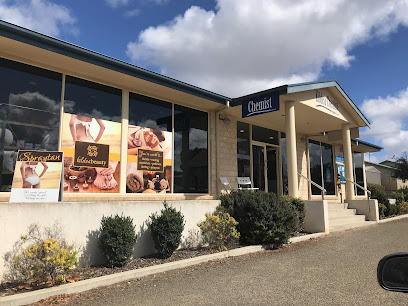
Flavours of Petite Provence
Explore the flavors of South Australia at Flavours of Petite Provence, a charming grocery store offering local produce and gourmet delights.
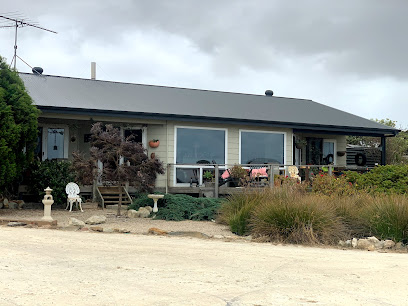
Essential bars & hidden hideouts
Aurora Ozone Hotel - Kangaroo Island
Experience the beauty of Kangaroo Island at Aurora Ozone Hotel, where comfort meets adventure in a stunning coastal setting.

Cactus Kangaroo Island
Discover the flavors of Kangaroo Island at Cactus, where fresh ingredients meet cozy charm in a delightful dining experience.
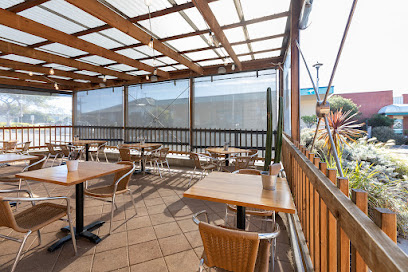
Penneshaw Pub
Discover the culinary delights and stunning views at Penneshaw Pub, your perfect spot for relaxation on Kangaroo Island.
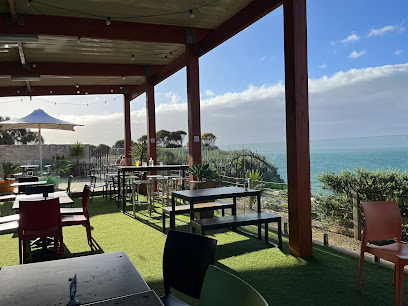
Millie Mae's Pantry
Experience the best of South Australia at Millie Mae's Pantry - a charming café and gift shop in Penneshaw.
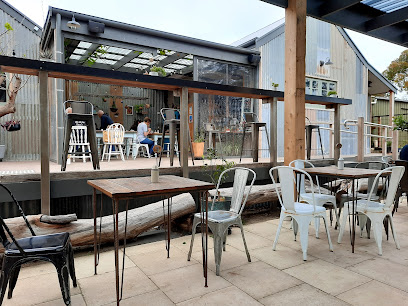
Kangaroo Island Spirits
Experience the essence of Kangaroo Island through artisanal spirits at Kangaroo Island Spirits, a unique distillery offering tastings, tours, and local flavors.
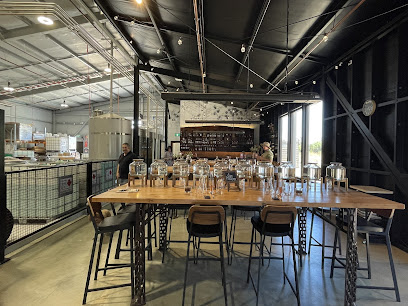
Bella Cafe & Pizza Bar
Discover the perfect blend of delicious pizza and quality coffee at Bella Cafe & Pizza Bar in Kingscote, South Australia.
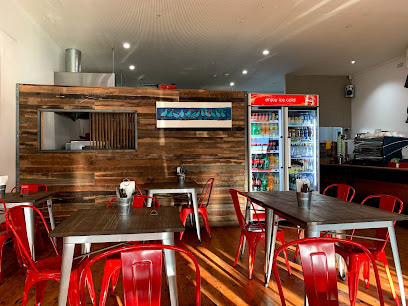
Amadio’s Vino e Cucina – Kangaroo Island
Experience the best of Italian cuisine and local wines at Amadio’s Vino e Cucina, a culinary treasure on Kangaroo Island.
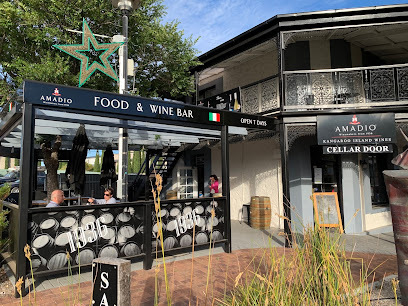
The Rockpool Cafe
Experience the flavors of Cassini at The Rockpool Cafe, where delicious meals meet stunning coastal views.
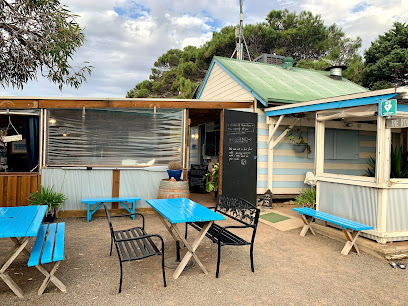
Fire and Smoke Ki
Discover the flavors of Australia at Fire and Smoke Ki, a restaurant in Penneshaw offering innovative dishes and a warm, inviting atmosphere.
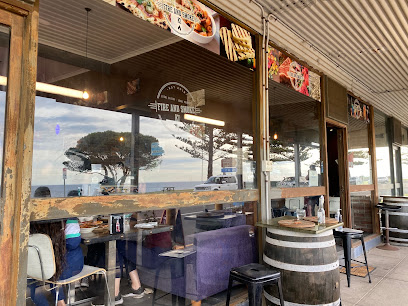
The Islander Estate Vineyards - Kangaroo Island Wines
Experience the finest wines of Kangaroo Island at The Islander Estate Vineyards, where breathtaking views and rich flavors await every visitor.
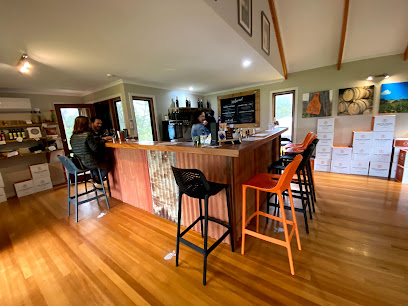
Sunset Food and Wine
Experience the best of local cuisine at Sunset Food and Wine, a charming bistro in Kangaroo Head with stunning views and exceptional service.

The Kiosk Penneshaw
Discover the flavors of Kangaroo Island at The Kiosk Penneshaw, where fresh local cuisine meets stunning coastal views.
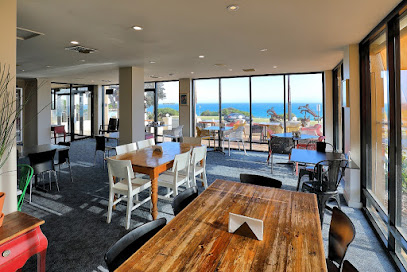
So Sando
Discover the unique flavors of Asian fusion cuisine at So Sando, Kingscote's hidden gem for food enthusiasts.
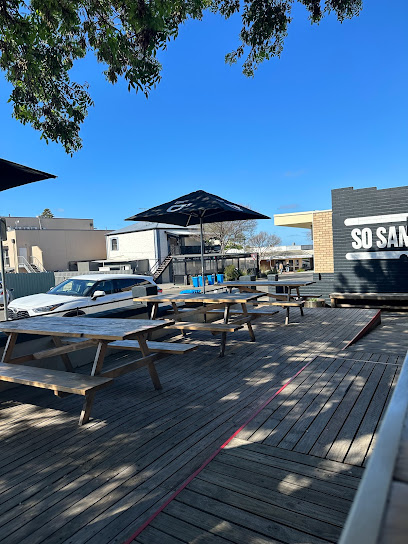
Penneshaw Beach Bar
Penneshaw Beach Bar: A Coastal Haven for Coffee Lovers, Breakfast Enthusiasts, and Ice Cream Aficionados.
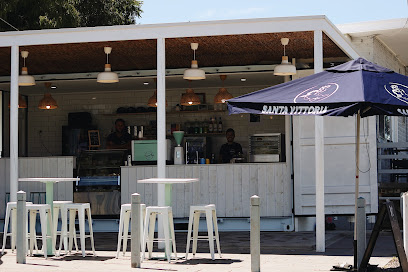
Zone Restaurant & Bar
Discover the culinary delights of Zone Restaurant & Bar in Kingscote, South Australia, where local flavors and a vibrant atmosphere await you.
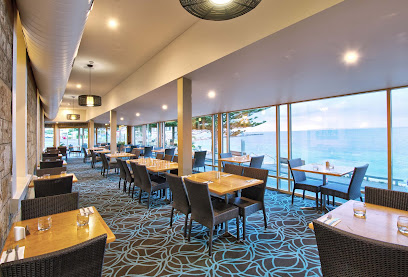
Travel experiences inspired by this city
Explore more travel diariesLocal Phrases
-
- HelloWadni
[wad-nee] - GoodbyeNgurunderi
[ngoo-run-der-ee] - YesNgerrin
[ngair-in] - NoNginndi
[ning-dee] - Please/You're welcomeWanbi
[wan-bee] - Thank youNgarrindjeri
[ngar-in-jer-ee] - Excuse me/SorryNgarrinj
[ngar-rinj] - How are you?Ngarrin?
[ngar-rin] - Fine. And you?Ngarrin ngarrin?
[ngar-rin ngar-rin] - Do you speak English?Wade u warrin?
[wah-deh oo warr-in] - I don't understandNgi gurrindjeri
[ngi gur-rind-jer-ee]
- HelloWadni
-
- I'd like to see the menu, pleaseNgarrin ngarrin ngarrin, wadni
[ngar-rin ngar-rin ngar-rin, wad-nee] - I don't eat meatNgi ngarrin gurrindjeri
[ngi ngar-rin gur-rind-jer-ee] - Cheers!Ngarrin!
[ngar-rin] - I would like to pay, pleaseNgarrin ngarrin ngarrin, wadni
[ngar-rin ngar-rin ngar-rin, wad-nee]
- I'd like to see the menu, pleaseNgarrin ngarrin ngarrin, wadni
-
- Help!Wadni!
[wad-nee] - Go away!Wade u!
[wah-deh oo] - Call the Police!Wade u warrin ngarrin!
[wah-deh oo warr-in ngar-rin] - Call a doctor!Wade u warrin!
[wah-deh oo warr-in] - I'm lostNgi ngarrin
[ngi ngar-rin] - I'm illNgi ngarrin
[ngi ngar-rin]
- Help!Wadni!
-
- I'd like to buy...Ngarrin ngarrin ngarrin...
[ngar-rin ngar-rin ngar-rin...] - I'm just lookingNgarrin ngarrin ngarrin
[ngar-rin ngar-rin ngar-rin] - How much is it?Ngarrin ngarrin ngarrin?
[ngar-rin ngar-rin ngar-rin] - That's too expensiveWade u gurrindjeri
[wah-deh oo gur-rind-jer-ee] - Can you lower the price?Wade u gurrindjeri ngarrin?
[wah-deh oo gur-rind-jer-ee ngar-rin]
- I'd like to buy...Ngarrin ngarrin ngarrin...
-
- What time is it?Wade u warrin?
[wah-deh oo warr-in] - It's one o'clockNgarrin ngarrin ngarrin
[ngar-rin ngar-rin ngar-rin] - Half past (10)Wade u warrin?
[wah-deh oo warr-in] - MorningNgi ngarrin
[ngi ngar-rin] - AfternoonNgi ngarrin
[ngi ngar-rin] - EveningNgi ngarrin
[ngi ngar-rin] - YesterdayNgi ngarrin
[ngi ngar-rin] - TodayNgi ngarrin
[ngi ngar-rin] - TomorrowNgi ngarrin
[ngi ngar-rin] - 1Ngarrin
[ngar-rin] - 2Ngarrin
[ngar-rin] - 3Ngarrin
[ngar-rin] - 4Ngarrin
[ngar-rin] - 5Ngarrin
[ngar-rin] - 6Ngarrin
[ngar-rin] - 7Ngarrin
[ngar-rin] - 8Ngarrin
[ngar-rin] - 9Ngarrin
[ngar-rin] - 10Ngarrin
[ngar-rin]
- What time is it?Wade u warrin?
-
- Where's a/the...?Wade u warrin?
[wah-deh oo warr-in] - What's the address?Wade u warrin?
[wah-deh oo warr-in] - Can you show me (on the map)?Wade u warrin?
[wah-deh oo warr-in] - When's the next (bus)?Wade u warrin?
[wah-deh oo warr-in] - A ticket (to ....)Wade u warrin?
[wah-deh oo warr-in]
- Where's a/the...?Wade u warrin?
History of Kangaroo Island
-
Long before European settlers arrived, Kangaroo Island was home to the Aboriginal people known as the 'Kartans'. Evidence suggests that they lived on the island for thousands of years, leaving behind tools, campsites, and other archaeological sites. However, the Kartans mysteriously disappeared around 2,000 years ago, their fate still a subject of research and speculation.
-
In 1802, British navigator Captain Matthew Flinders became the first European to officially record the sighting of Kangaroo Island. He named it after the abundance of kangaroos he and his crew encountered, which provided a crucial source of fresh meat after their long sea voyage.
-
Just months after Flinders' discovery, the French explorer Nicolas Baudin arrived on Kangaroo Island. The Baudin expedition conducted detailed surveys and mapped much of the island's coastline. The French influence remains evident in the numerous place names such as Cape Borda and D'Estrees Bay.
-
The first European settlers on Kangaroo Island were sealers and whalers who arrived in the early 1800s. They established small, temporary camps along the coast. These early communities often comprised escaped convicts and outcasts, living a rugged and isolated existence.
-
By the mid-19th century, more structured settlements began to emerge, and agriculture became the primary economic activity. Farmers cleared the land for sheep and cattle grazing, and the island's fertile soil proved ideal for growing crops. This period marked the beginning of Kangaroo Island's transformation into a more established community.
-
In the late 19th and early 20th centuries, several lighthouses were constructed to aid navigation around the treacherous waters of Kangaroo Island. Notable among these are the Cape Willoughby Lighthouse (1852), Cape Borda Lighthouse (1858), and Cape du Couedic Lighthouse (1909). These lighthouses played a crucial role in ensuring the safety of maritime travel.
-
During World War II, Kangaroo Island was strategically important due to its location. Military installations, including an airstrip and radar stations, were established to monitor and protect the southern coastline of Australia. The remnants of these installations can still be found on the island today.
-
In the latter half of the 20th century, Kangaroo Island became renowned for its natural beauty and unique wildlife. Significant efforts were made to preserve its environment, leading to the establishment of several national parks and conservation areas, such as Flinders Chase National Park. These efforts have helped protect the island's diverse ecosystems and endemic species.
-
Today, Kangaroo Island is a popular tourist destination, known for its stunning landscapes, wildlife encounters, and rich history. Visitors can explore its pristine beaches, rugged coastlines, and charming towns, all while learning about the island's fascinating past. Tourism has become a vital part of the island's economy, drawing visitors from around the world.
Kangaroo Island Essentials
-
Kangaroo Island is located southwest of Adelaide, South Australia. To get there, you can take a ferry operated by SeaLink from Cape Jervis to Penneshaw. The ferry ride takes approximately 45 minutes. Alternatively, you can fly from Adelaide Airport to Kingscote Airport on the island with a flight time of around 30 minutes. Both QantasLink and Rex Airlines offer regular flights.
-
Once on Kangaroo Island, transportation options include rental cars, taxis, and guided tours. Renting a car is the most convenient way to explore the island at your own pace. Bicycle rentals are also available for those who prefer an eco-friendly option. Public transport is limited, so it’s advisable to plan your travel in advance. Guided tours can provide a hassle-free way to see major attractions.
-
The official currency in Australia is the Australian Dollar (AUD). Credit and debit cards are widely accepted on Kangaroo Island, but it’s advisable to carry some cash, especially if you plan to visit more remote areas. ATMs are available in larger towns like Kingscote and Penneshaw. Contactless payment options such as Apple Pay and Google Pay are also commonly accepted.
-
Kangaroo Island is generally a safe destination for tourists. However, it’s important to take standard precautions. Avoid leaving valuables in your car and be cautious when driving, particularly at dawn and dusk when wildlife is more active. There are no specific high-crime areas targeting tourists, but it’s always best to stay vigilant and aware of your surroundings.
-
In case of emergency, dial 000 for police, fire, or medical assistance. The main hospital on the island is located in Kingscote. It’s advisable to have comprehensive travel insurance that covers medical emergencies. Pharmacies are available in larger towns for minor health issues. For marine-related emergencies, contact the local coast guard.
-
Fashion: Do wear comfortable, casual clothing suitable for outdoor activities. Don’t forget sun protection like hats and sunscreen. Religion: Do respect local customs and any cultural sites you visit. There are no specific religious dress codes. Public Transport: Do plan your travel in advance as public transport options are limited. Don’t rely solely on public transport to get around. Greetings: Do greet people with a friendly 'Hello' or 'G'day'. A handshake is also common. Eating & Drinking: Do try local produce like honey, seafood, and wines. Don’t litter; always dispose of waste responsibly.
-
To experience Kangaroo Island like a local, visit the farmers' markets for fresh produce and artisanal goods. Engage with locals who are often friendly and willing to share tips and stories about the island. Don’t miss out on the island’s wildlife parks and conservation areas. For a unique experience, try a nocturnal wildlife tour to see animals like the elusive platypus.
Trending Landmark in Kangaroo Island
-
Seal Bay Conservation Park
-
Kangaroo Island Wildlife Park
-
Kangaroo Island Outdoor Action
-
Flinders Chase National Park
-
Emu Ridge Eucalyptus Oil Distillery
-
Admirals Arch
-
Raptor Domain
-
Remarkable Rocks
-
Island Beehive
-
Little Sahara Adventure Centre
-
Emu Bay Lavender Farm
-
Hanson Bay Wildlife Sanctuary
-
Kangaroo Island Seaside Inn
-
Kangaroo Island Tours & Nocturnal Tours - Kangaroo Island Hire a Guide
-
The Islander Estate Vineyards - Kangaroo Island Wines
Nearby Cities to Kangaroo Island
-
Things To Do in Adelaide
-
Things To Do in Melbourne
-
Things To Do in Canberra
-
Things To Do in Hobart
-
Things To Do in Sydney
-
Things To Do in Alice Springs
-
Things To Do in Byron Bay
-
Things To Do in Gold Coast
-
Things To Do in Surfers Paradise
-
Things To Do in Brisbane
-
Things To Do in Noosa
-
Things To Do in Airlie Beach
-
Things To Do in The Whitsundays
-
Things To Do in Cairns
-
Things To Do in Port Douglas











